Search
Search Results
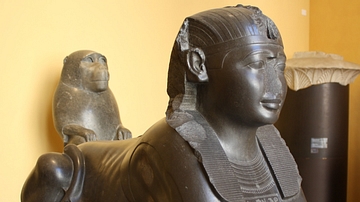
Image
Sphinx of Amasis
A basanite statue of a sphinx with the features of pharaoh Amasis. 26th Dynasty, 568-526 BCE. From the Temple of Isis in the Campus Martius, Rome. (Capitoline Museums, Rome)
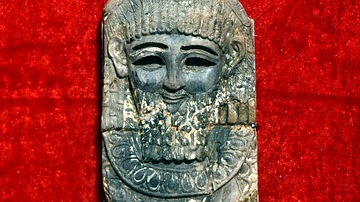
Image
Ivory Sphinx from Nimrud
This ivory plaque is virtually complete but burnt (partly black and partly grey). It depicts the bearded head and forequarters of a sphinx, advancing left with head turned outwards. This is one of the rare examples of the combination of Syrian...

Image
Hittite Sphinx
This basalt Hittite sphinx was placed at the entrance into the palace number three at Sam'al (modern-day Sinjerli, Gaziantep, Turkey). Late Hittite period, 8th century BCE. (Istanbul Archaeological Museums/Ancient Orient Museum, Istanbul...
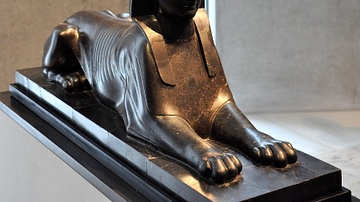
Image
Egyptian Sphinx from Hadrian's Villa
This basalt Egyptian-style sphinx was found at Hadrian's villa (Tivoli), Italy. Roman period, 1st century CE. (State Museum of Egyptian Art, Munich, Germany).
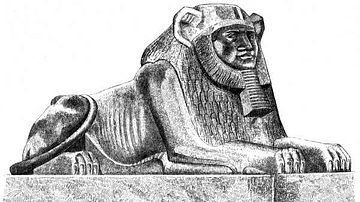
Image
Sphinx in black granite
Sphinx in black granite; from Tanis. Drawn by G. Bénédite.
From A History of Art in Ancient Egypt, Vol. II by Georges Perrot and Charles Chipiez (1883).
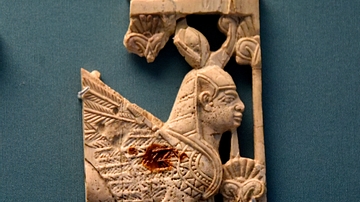
Image
Nimrud Ivory of a Winged Sphinx
Never seen by the public before 2011. A small fragment of an ivory plaque from Nimrud. A winged human-headed sphinx wears the double crown of Egypt. An apron hangs down on the chest with a projecting uraeus (rearing cobra) similar to those...
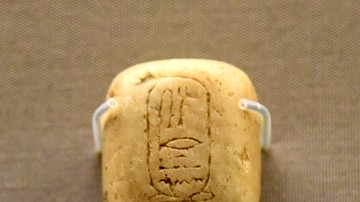
Article
Ancient Egyptian Taxes & the Cattle Count
The gods of ancient Egypt freely gave their bounty to the people who worked the land, but this did not exempt those farmers from paying taxes on that bounty to the government. Egypt was a cashless society until the Persian Period (c. 525...

Image
Egyptian sphinx from Diocletian's Palace
Diocletian's Palace was decorated with numerous granite sphinxes originating from the site of Egyptian Pharaoh Thutmose III. Only three have survived the centuries. This one is still located on the Peristyle of Diocletian's Palace.

Video
Memphis and its Necropolis -- the Pyramid Fields from Giza to Dahshur (UNESCO/NHK)
The capital of the Old Kingdom of Egypt has some extraordinary funerary monuments, including rock tombs, ornate mastabas, temples and pyramids. In ancient times, the site was considered one of the Seven Wonders of the World. Source: UNESCO...
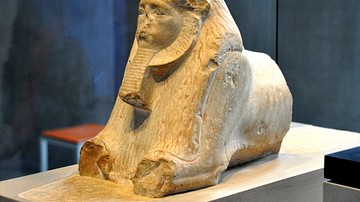
Image
Sphinx of Amenemhat III
Limestone statue of maned sphinx of the Egyptian pharaoh Amenemhat III. From modern-day Egypt. Middle Kingdom, 12 Dynasty, circa 1800 BCE. (State Museum of Egyptian Art, Munich, Germany).